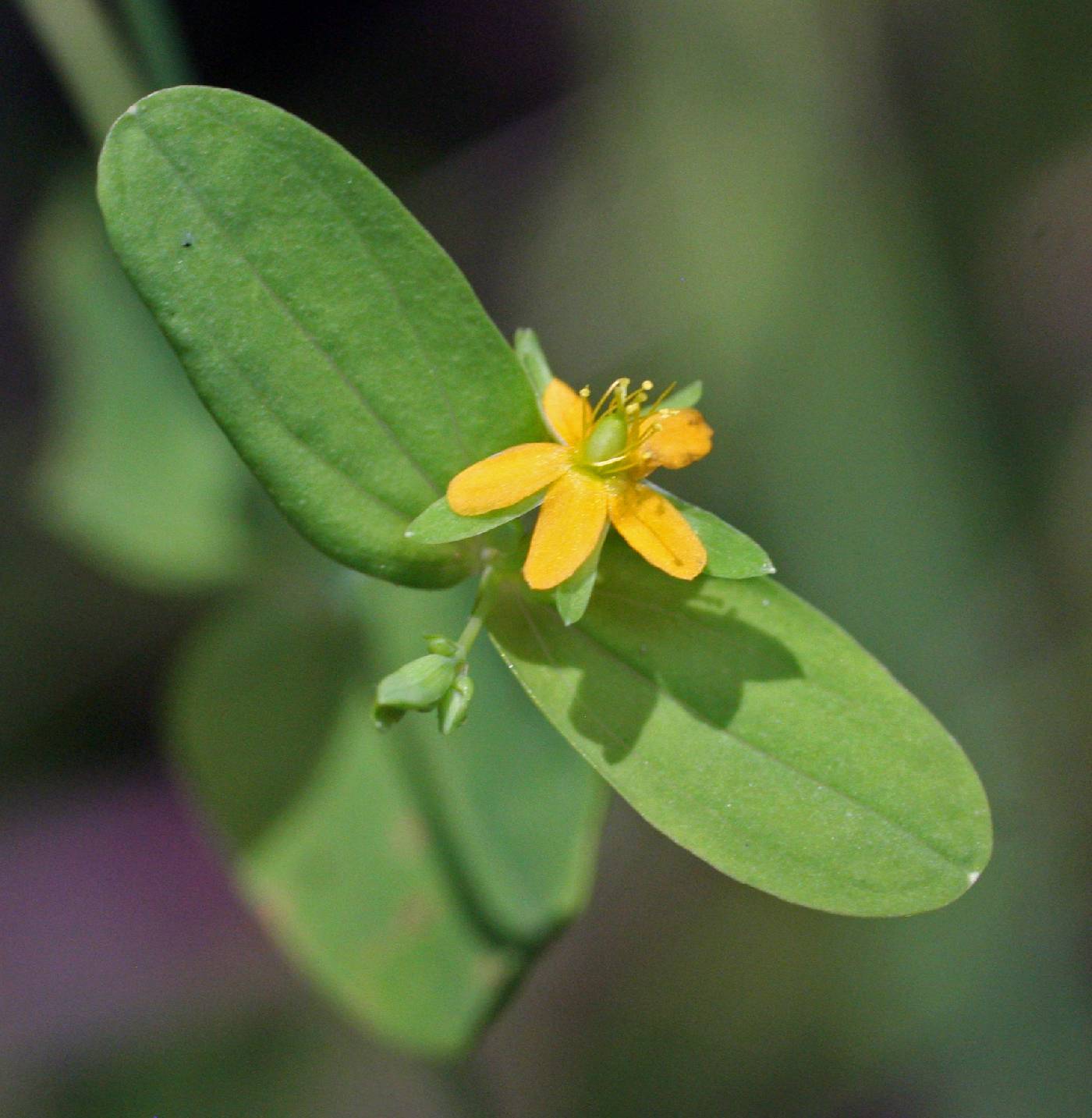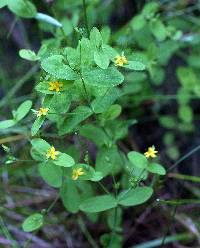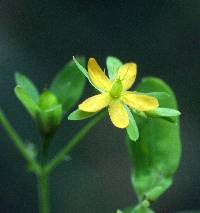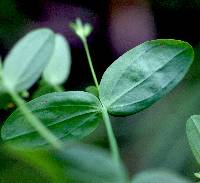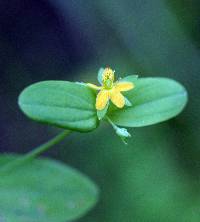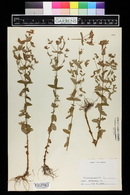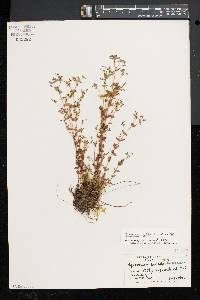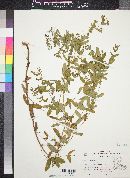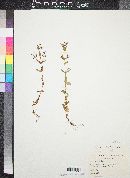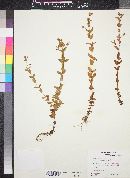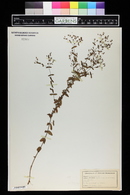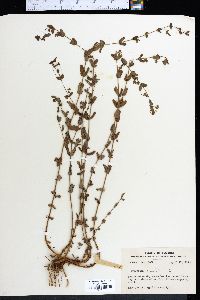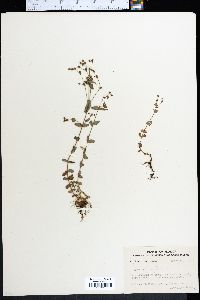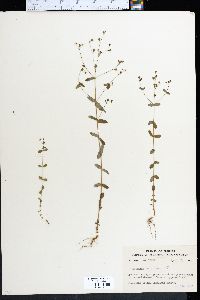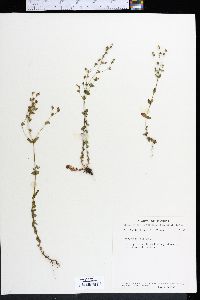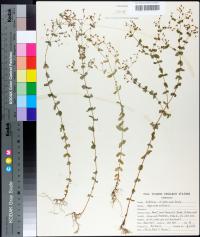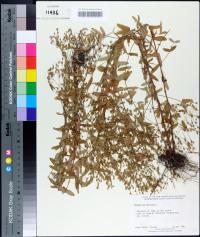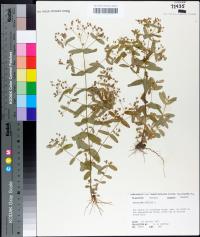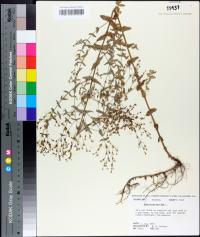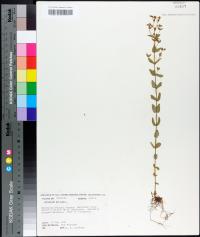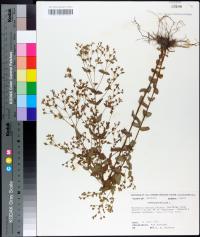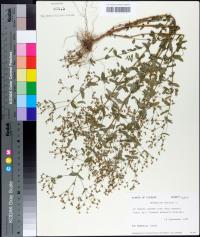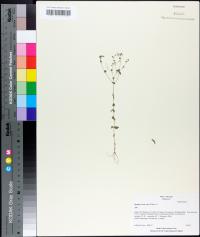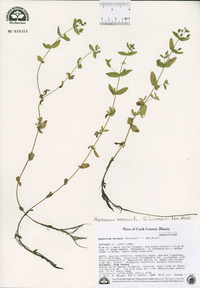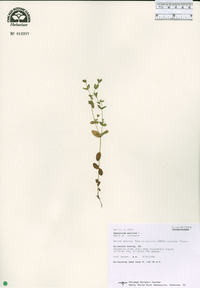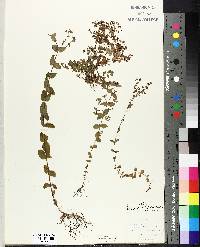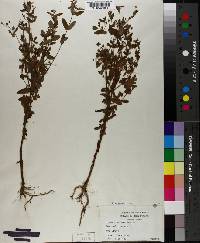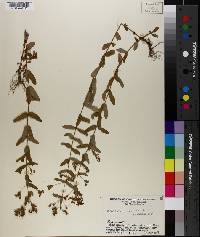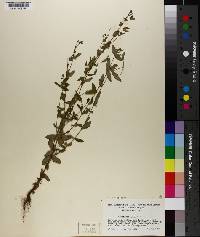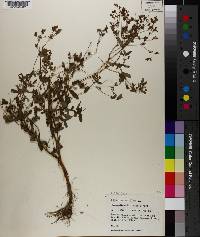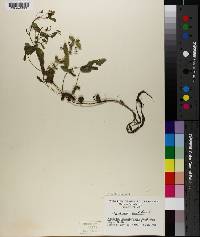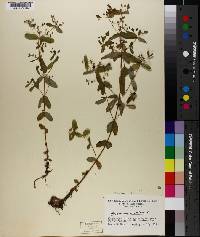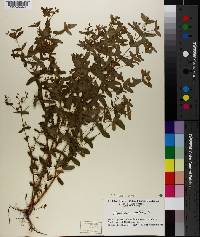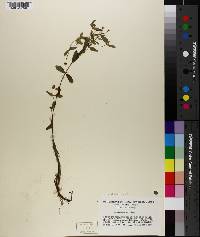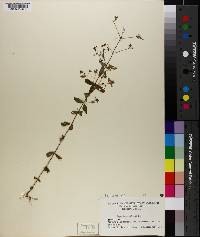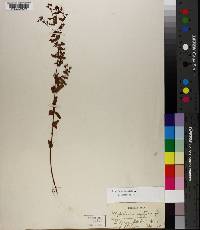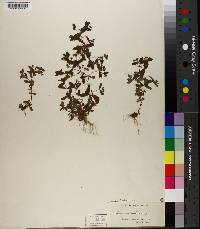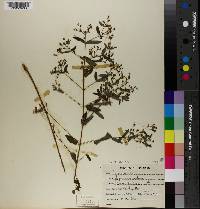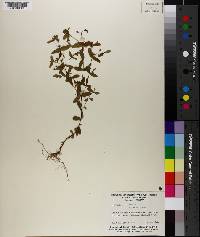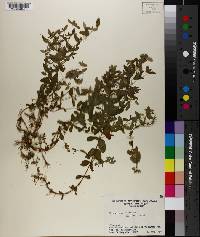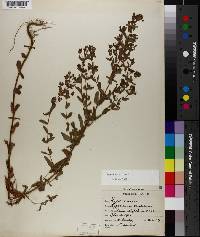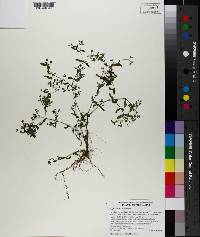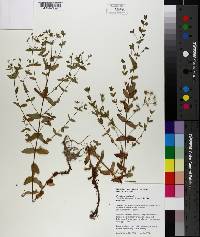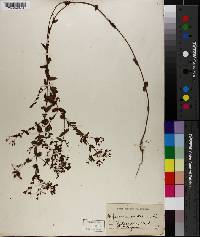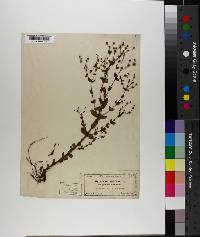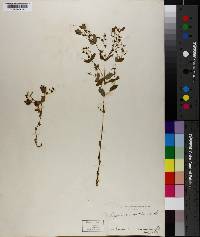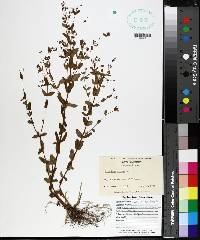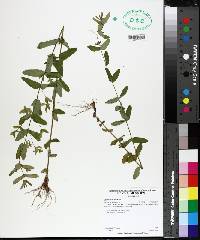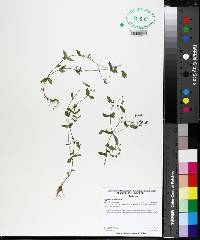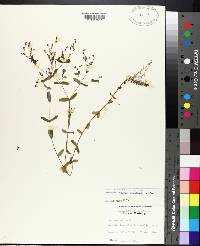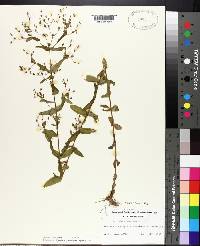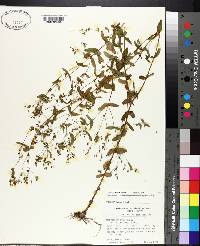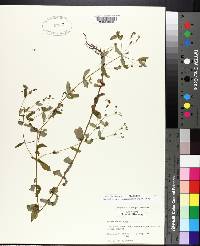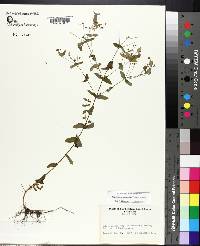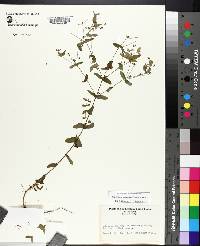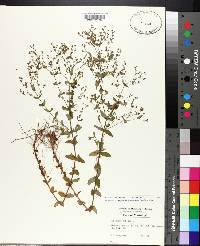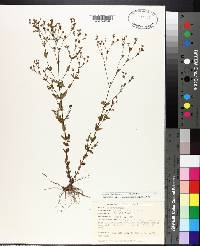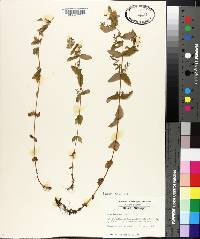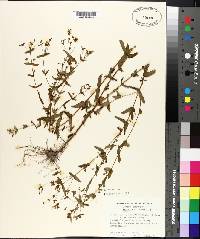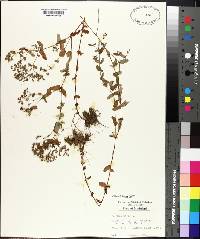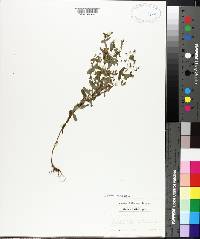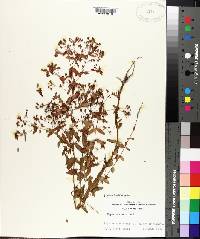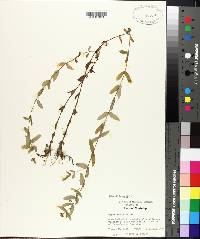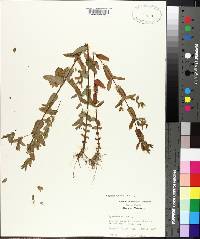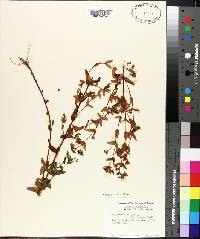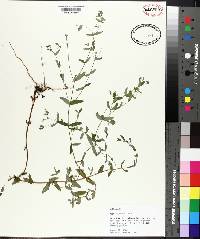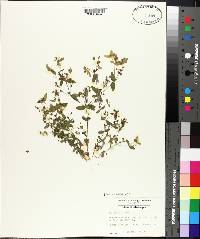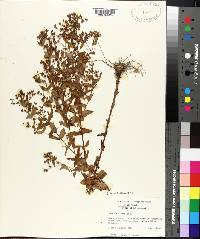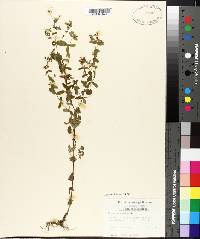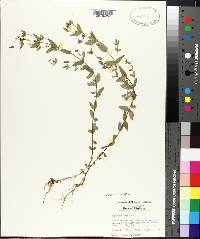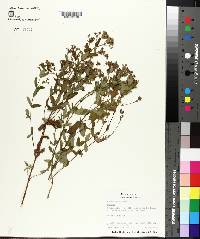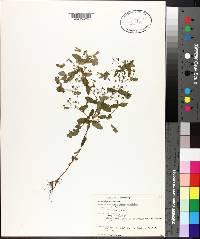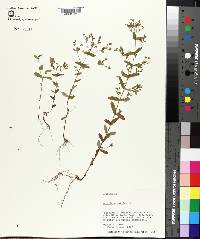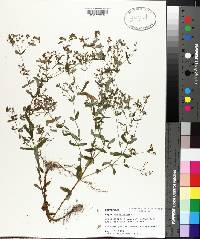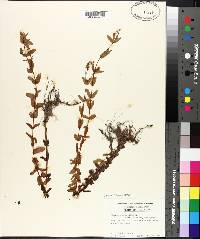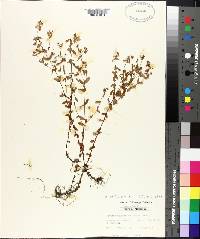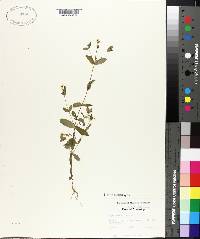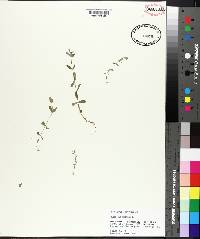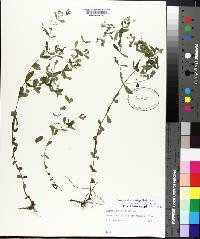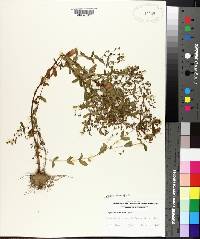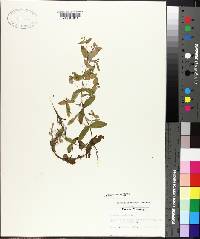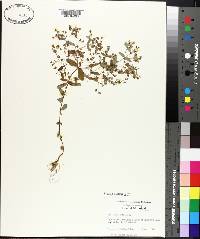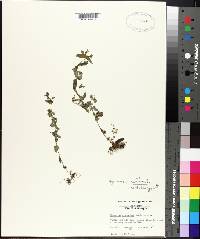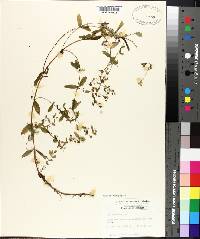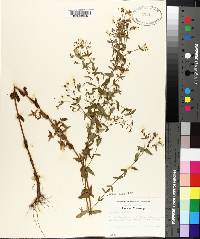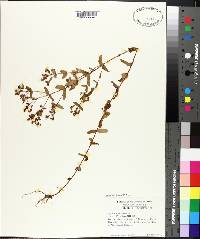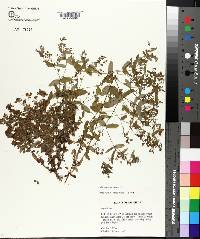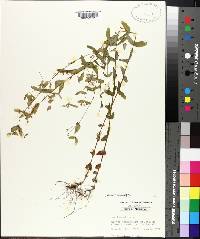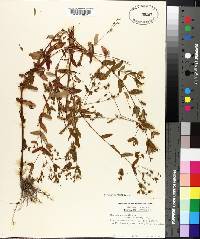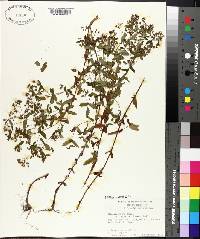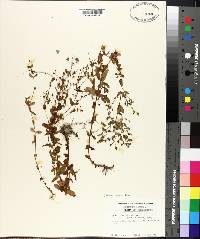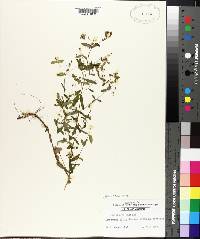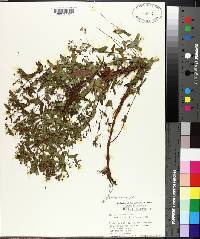Hypericum mutilum
|
|
|
|
Family: Hypericaceae
Dwarf St. John's-Wort, more...dwarf St. Johnswort
[Hypericum mutilum var. densiflorum] |
Annual or perennial herb 10 cm - 0.8 m tall Stem: erect, highly branched near the top. Leaves: opposite, 1 - 4 cm long, lance-shaped to elliptic or egg-shaped with a rounded to blunt base and blunt to slightly pointed tip, non-toothed, three- to five-veined. Flowers: borne in a widely and highly branched inflorescence, subtended by awl-shaped bracts 1 - 4 mm long, with 2 - 3.5 mm long sepals that are linear-oblong and widest at the middle with a pointed tip, five yellow petals 1.5 - 2.5 mm long, five to sixteen stamens, and three styles less than 1 mm long. Fruit: a one-chambered capsule, green, 2 - 3.5 mm long, elliptic with a rounded tip, containing many 0.4 - 0.7 mm long seeds. Similar species: Hypericum boreale, Hypericum canadense, Hypericum gentianoides, Hypericum gymnanthum, Hypericum majus, and Hypericum multilum have fewer than 25 stamens per flower. Hypericum boreale can grow as an aquatic or in wet soils. It reaches 10 - 40 cm tall, has stalkless oblong to oval leaves that are less than 2 cm long, and the flowers have leaf-like bracts, 2.5 - 3 mm long petals and eight to fifteen stamens. Hypericum canadense differs because it is 10 cm - 0.6 m tall, the linear to lance-shaped leaves are more than three times as long as wide and single-veined or lightly three-veined, and the flowers have awl-shaped bracts, sepals less than 4.5 mm long, petals 2.5 - 3 mm long, and twelve to 22 stamens. Hypericum gentianoides has green wiry stems that are highly branched, minute scale-like leaves that are pressed against the stems, tiny yellow flowers with five petals and five to ten stamens, and capsules two to three times the length of the sepals. Hypericum gymnanthum is distinguished because the stems are usually unbranched, the leaves are triangular lance-shaped or triangular egg-shaped and rarely more than three times as long as wide, the flowers have awl-shaped bracts and lance-shaped sepals beneath the 3 - 3.5 mm long petals and ten to fourteen stamens, and the capsules are lance-shaped to narrow conical and 3 - 5 mm long. Hypericum majus has lance-shaped leaves that are more than three times as long as wide and five- to seven-veined, and flowers with awl-shaped bracts, 4.5 - 6.5 mm long sepals, 3.5 - 4 mm long petals, and fourteen to 21 stamens. Flowering: mid July to mid October Habitat and ecology: Railroad ditches, wet sandy ditches, and sandy marshes near Lake Michigan. Occurence in the Chicago region: native Etymology: Hypericum is the Greek name for St. John's Wort, which blooms around St. John's Day (June 24). Mutilum means mutilated. Author: The Morton Arboretum Erect annual or perennial 1-8 dm, usually much-branched above; lvs lanceolate to elliptic or ovate, 1-4 cm, obtuse to subacute, broadly obtuse to rounded at base, 3-5- nerved; infl commonly widely much-branched; bracteal lvs subulate, 1-4 mm; sep linear-oblong, acute, about equaling the fr; pet 1.5-2.5 mm; stamens 5-16; styles 3, under 1 mm; fr green, ellipsoid, unilocular, 2-3.5 mm; seeds 0.4-0.7 mm; 2n=16. Wet soil; Nf. and Que. to Man., s. to Fla. and Tex. July-Sept. (H. parviflorum) Gleason, Henry A. & Cronquist, Arthur J. 1991. Manual of vascular plants of northeastern United States and adjacent Canada. lxxv + 910 pp. ©The New York Botanical Garden. All rights reserved. Used by permission. |

